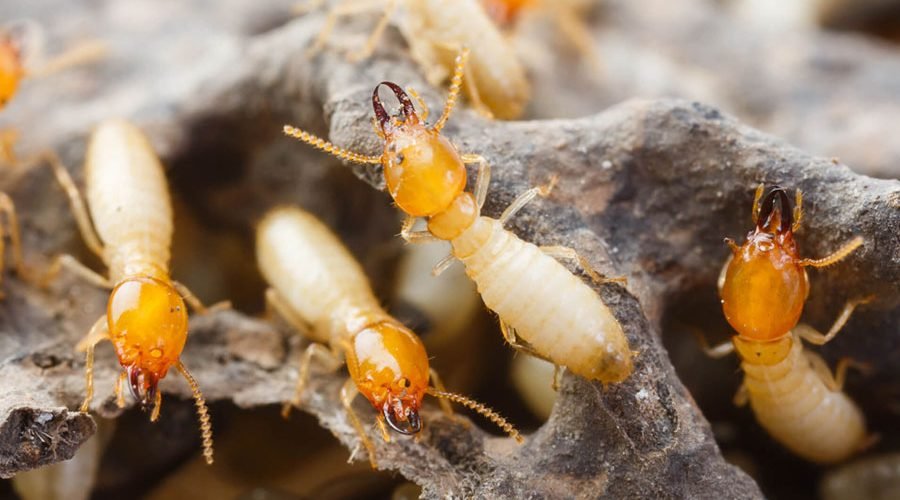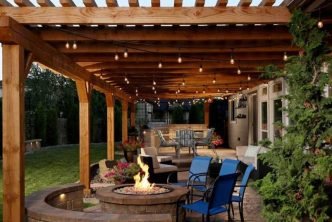Termites cause extensive damage to structures. It is associated with losing materials and the resources used to build them. However, as destructive as they are, they can be dealt with immediately and effectively by some means.
Below are some simple but effective tips for preventing termite infestation in your home.
But before that, let’s discuss what they are, the difference between ants, and the various types of termites.
Table of Contents
What is a Termite?
These are social insects that live in colonies or nests and feed on wood. They make their homes in the soil but need wood to survive.
Termites eat wood because it contains cellulose, a sugar that feeds their bodies. They also need moisture to survive.
They eat through the wood by chewing through its cellulose fibres and then digesting them with enzymes.
This process can take several months as termites work together to eat through wood structures like your home’s frame and foundation.
If you have found termites in your home, it is essential to take action quickly.
Termites are an expensive problem to fix, so it is best to prevent them from entering your home in the first place.
What’s the Difference Between Termites and Ants
Termites and ants are insects, but they’re very different in their appearance and habits.
Both termites and ants are social animals that live in colonies or nests, depending on the species.
However, termites are more closely related to cockroaches than to ants.
The primary difference between termites and ants is what they eat.
Termites eat wood, while ants feed on various plants, including fruits and vegetables.
Ants eat other insects, including ants, if they can catch them. Some ants will even steal food from your hand if you leave it lying around for them to find.
Types of Termites
The two major types of termites are dry wood and subterranean. Here are some details about each:
Drywood Termites
The dry wood termite is a native species that live in wood damaged by moisture or other environmental factors.
Drywood termites can live for up to 20 years without food, so homeowners should always check for signs of infestation when buying used furniture or appliances.
The best way to prevent dry wood termites is to keep your house dry and adequately ventilated. If you suspect an infestation, contact an experienced pest control company immediately.
Subterranean Termites
Subterranean termites live in soil and tunnel through it from one food source to another.
They feed on cellulose and often build tunnels in grassy areas around homes where they can reach their food supply easily.
Subterranean termites are easy to spot because they leave behind mud tubes along the sides of their tunnels as they move through moist soil near the house or other structures.
Knowing which type you are dealing with is critical because each may necessitate a different treatment strategy.
6 Ways to Prevent Termite Infestation
If you have been searching for ways to prevent termite infestation, listed are six ways that you can use to control a termite infestation effectively:
Inspect Your Foundation Each Season
Termites feed off wood, so they usually build their nests near wooden structures like homes and sheds.
They also prefer dry areas with little moisture, typically living under the ground or in woodpiles.
To prevent them from entering your home, inspect your foundation each season for signs of termite activity.
Check for holes in your yard or foundation that could be entry points for these insects and cracks in your walls or other wooden features around your home.
Look for any damage on your property that might be caused by termites and get it fixed immediately.
Maintain Proper Ventilation and Sealing
Termites need moisture to survive, so ensure no holes in your home’s walls or foundation.
Ensure that your home has proper ventilation to avoid dampness by keeping your house well-ventilated. This will allow fresh air and stale air to exit your house.
However, if you have blocked any vents or holes around your house, this will create a conducive environment for termite infestation.
Therefore, ensure all vents are open and appropriately sealed so that no cracks or gaps are left behind, which could be quickly occupied by termites.
Clean Gutters and Pipes
Gutters and pipes are often overlooked when it comes to being inspected for pests.
These areas are prime locations for termites because they provide shelter from the elements and give them access to food sources such as wood or paper products.
You should clear out your gutters at least once per year and have any clogs removed so that water can flow readily through them.
If you notice any damage or holes in your gutters, you should repair them immediately so that termites or insects cannot build a nest.
Keep Wood Piles Away From Your House
Termites love wood, so try not to store wood near your home.
Keep firewood at least 100 feet away from the house, and ensure it’s dry before storing it in a shed or garage.
It would be best if you also covered it with tarps or netting to keep out moisture. Consider using treated lumber for those projects if you have a deck or patio.
Trim Trees and Shrubs
Keep your trees from growing too close to your house or other structures because they provide termite shelter.
Trim them regularly, so they don’t grow too tall or thick, making them difficult to cut down when they get old and become dangerous.
You should keep bushes and shrubs trimmed so they don’t provide cover for termites during rainy seasons or after heavy rains when soil becomes soft enough to burrow into your lawns quickly.
Get Regular Inspections
One way to prevent termite infestation is by inspecting your home regularly. This will help you identify any signs of an infestation early on so that they do not spread and cause extensive damage later on.
Inspecting your home can be done at least once every three months. Or you can do it depending on the wood used in your house and your climate.
Final Thoughts
If you follow these tips and recommendations, you should be able to prevent termite infestation in your home effectively.
The key is not to give them a chance, so inspect your house regularly and continuously and check for the first signs of an infestation so that the problem can be dealt with promptly.





